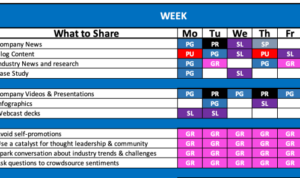Diving into the world of calculating mortgage affordability, we embark on a journey filled with insights and practical tips to navigate the complex terrain of homeownership.
As we explore the intricacies of factors affecting mortgage affordability and the importance of realistic budgeting, you’ll gain a deeper understanding of how to make informed decisions when purchasing a home.
Understanding Mortgage Affordability
When it comes to buying a house, understanding mortgage affordability is crucial. This concept refers to how much you can realistically afford to borrow for a home loan based on your financial situation.
Debt-to-Income Ratio
The debt-to-income ratio is a key factor in determining mortgage affordability. This ratio compares your monthly debt payments to your gross monthly income. Lenders use this ratio to assess your ability to manage monthly payments and determine the loan amount you qualify for.
Down Payment
A down payment is the initial payment made when purchasing a home. The size of your down payment affects your mortgage affordability. A larger down payment can lower your monthly mortgage payments and overall loan amount, making the home more affordable in the long run.
Importance of Calculating Mortgage Affordability
Calculating mortgage affordability before buying a house is essential to avoid financial strain in the future. By assessing your financial situation, including income, debts, and expenses, you can determine a realistic budget for your home purchase. This helps you avoid taking on a mortgage that you may struggle to repay, ensuring a more stable financial future.
Factors Affecting Mortgage Affordability
When it comes to determining mortgage affordability, several key factors come into play that can either make it easier or more challenging to secure a mortgage. Let’s take a closer look at the main factors that impact mortgage affordability.
Income
Income is a crucial factor in determining mortgage affordability. Lenders typically look at your monthly income to calculate the maximum mortgage amount you can afford. A higher income generally means you can afford a larger mortgage, while a lower income may limit your borrowing capacity.
Expenses
Your expenses, including monthly debt payments, utility bills, and other financial obligations, also play a significant role in mortgage affordability. Lenders consider your debt-to-income ratio to assess how much of your income goes towards paying off debts. Higher expenses can reduce the amount you can borrow for a mortgage.
Credit Score
Your credit score is another important factor that affects mortgage affordability. A higher credit score indicates to lenders that you are a responsible borrower, making you eligible for lower interest rates and better loan terms. On the other hand, a lower credit score can result in higher interest rates, making the mortgage less affordable.
Interest Rates
Interest rates have a direct impact on mortgage affordability. Lower interest rates mean lower monthly mortgage payments, making homeownership more affordable. Conversely, higher interest rates can increase the overall cost of the mortgage, reducing affordability for potential buyers.
Impact of Changes
Any changes in these factors can significantly affect your ability to afford a mortgage. For example, a job loss leading to a decrease in income, an increase in expenses, a drop in credit score, or a rise in interest rates can all make it more challenging to secure a mortgage or afford the monthly payments.
Calculating Debt-to-Income Ratio

When applying for a mortgage, lenders look at your debt-to-income ratio to determine how much you can afford to borrow. This ratio is a crucial factor in assessing your financial health and ability to handle mortgage payments.
Step-by-Step Guide to Calculate Debt-to-Income Ratio
To calculate your debt-to-income ratio, add up all your monthly debt payments (such as credit card bills, car loans, student loans) and divide that total by your gross monthly income. Multiply the result by 100 to get a percentage. The formula is:
(Total Monthly Debt Payments / Gross Monthly Income) x 100
What is a Good Debt-to-Income Ratio for Mortgage Approval
A good debt-to-income ratio for mortgage approval is typically 43% or lower. Lenders prefer borrowers with a lower ratio as it indicates that you have more income available to cover your monthly mortgage payments.
How Lenders Use Debt-to-Income Ratio to Determine Affordability
Lenders use the debt-to-income ratio to evaluate your ability to manage additional debt from a mortgage. A lower ratio suggests that you have more disposable income to cover your mortgage payments comfortably. Lenders often have specific thresholds for debt-to-income ratios to determine eligibility for mortgage loans.
Determining a Realistic Budget
Setting a realistic budget for a mortgage is crucial to ensure financial stability and avoid overextending oneself. By creating a budget that aligns with mortgage affordability, individuals can make informed decisions and prevent potential financial strain in the future.
Importance of Setting a Realistic Budget
Creating a budget that accurately reflects one’s financial situation is key to determining how much can be comfortably allocated towards a mortgage payment each month. This helps prevent individuals from taking on more debt than they can handle and reduces the risk of defaulting on their mortgage.
Tips for Creating a Budget aligned with Mortgage Affordability
- Track all sources of income and expenses to determine the amount available for a mortgage payment.
- Consider additional costs such as property taxes, insurance, and maintenance when calculating affordability.
- Limit discretionary spending to free up more funds for mortgage payments.
- Save for a down payment to reduce the loan amount and lower monthly payments.
The 28/36 Rule
The 28/36 rule is a guideline used by lenders to assess a borrower’s ability to manage mortgage payments. It dictates that no more than 28% of gross monthly income should go towards housing expenses, while total debt payments should not exceed 36% of income.
28/36 Rule: Housing expenses should be less than 28% of gross monthly income, and total debt payments should not exceed 36% of income.
Understanding Down Payments and Interest Rates
When it comes to buying a home, understanding down payments and interest rates is crucial in determining mortgage affordability. Let’s break down how these factors impact your finances.
Impact of Down Payments on Mortgage Affordability
Down payments play a significant role in mortgage affordability as they affect the loan amount, interest rate, and monthly payments. A larger down payment means borrowing less money, resulting in lower monthly payments and potentially a lower interest rate. On the other hand, a smaller down payment may lead to higher monthly payments and interest costs over the life of the loan.
Effect of Interest Rates on Mortgage Cost
Interest rates have a direct impact on the overall cost of a mortgage. A higher interest rate means paying more in interest over the life of the loan, increasing the total amount you repay. Conversely, a lower interest rate can help reduce the total cost of the mortgage and lower monthly payments.
Comparison of Down Payment Percentages and Interest Rates
Let’s compare different scenarios to see how down payment percentages and interest rates influence mortgage affordability:
| Scenario | Down Payment | Interest Rate | Monthly Payment |
|---|---|---|---|
| Scenario 1 | 10% | 4% | $X |
| Scenario 2 | 20% | 3.5% | $Y |
| Scenario 3 | 30% | 4.5% | $Z |
By comparing these scenarios, you can see how adjusting down payment percentages and interest rates can impact your monthly payments and overall affordability.






